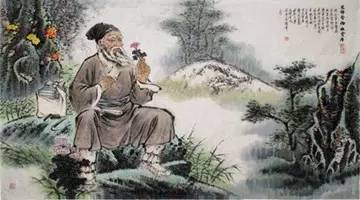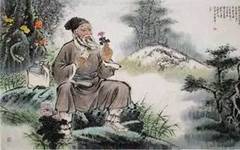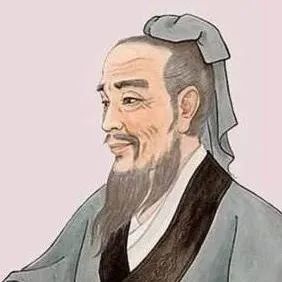
Zhang Zhongjing’s Medical PathTeaches you to differentiate syndromes and provide individualized treatment plans.Follow
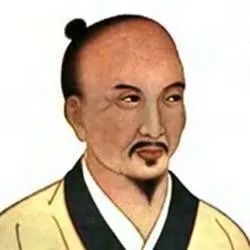
Danxi Medical PathProvides in-depth TCM content and health knowledge.Follow
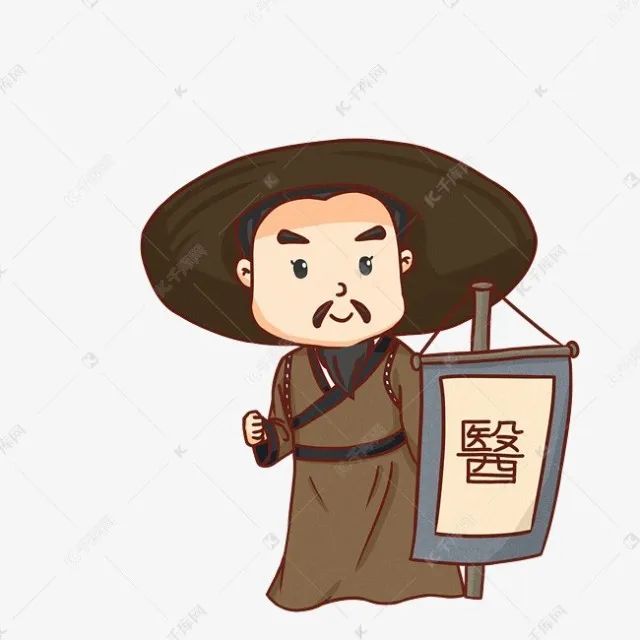
Huangdi Medical PathPractical TCM knowledge shared daily.Follow

Zhongjing Medical PathZhongjing’s national medicine, classics endure.Follow

Elephant Medical PathGreat sounds are rare, great forms are formless. Yin and Yang complement each other, the medical path merges.Follow
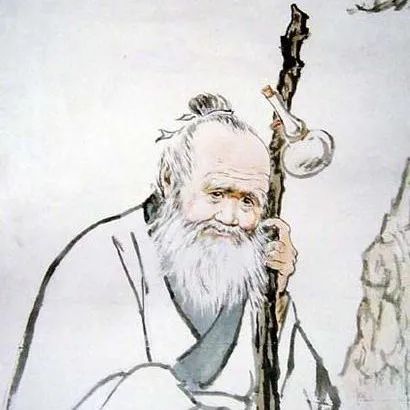
Danggui Medical PathDanggui Medical Path, the way of Qihuang.Follow
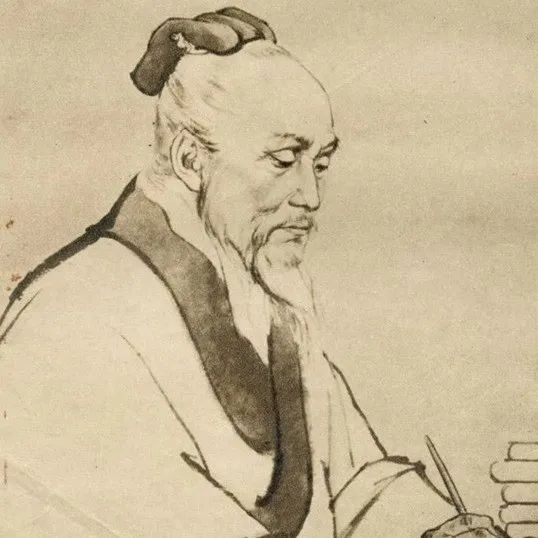
Yuan Zhi Medical PathThose who follow this account have learned skills.Follow
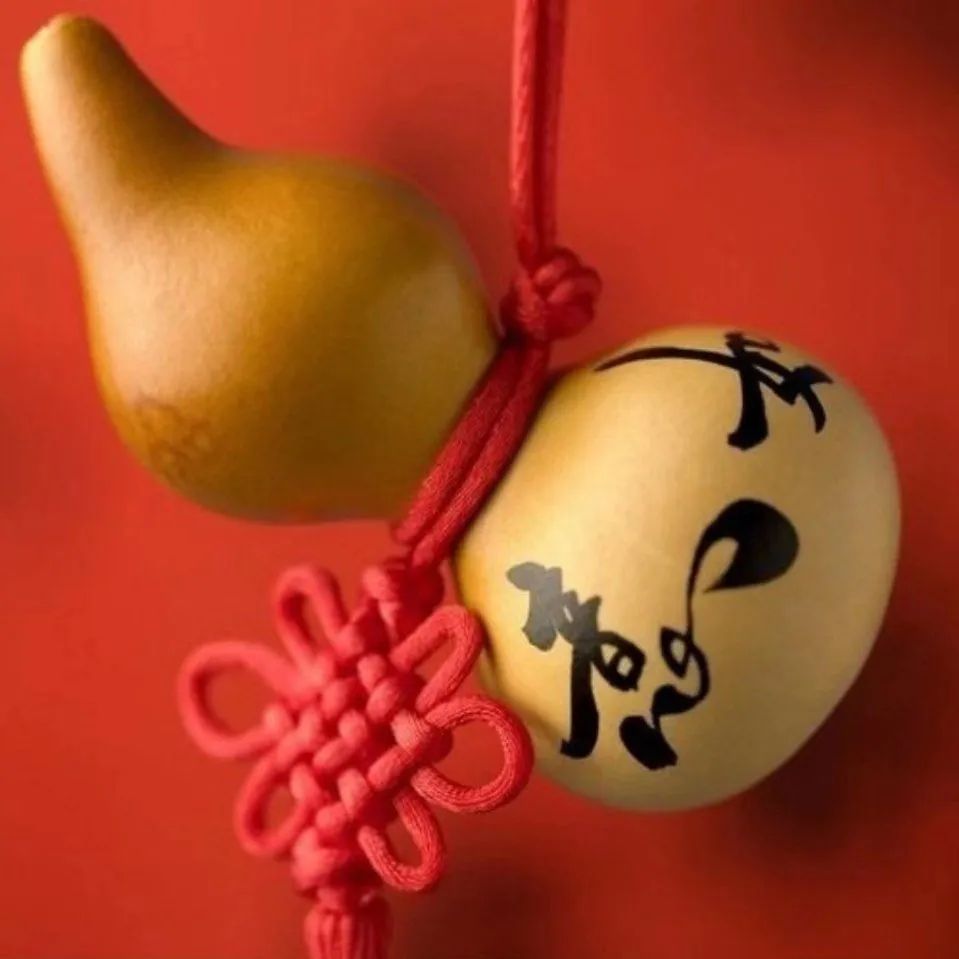
Xinglin Medical NarrativeThose who love TCM are all here.Follow
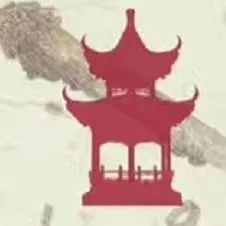
Xinglin Medical Skills PathTCM practitioners, welcome home.Follow
Click on the “Follow” above, or click on the public account name to follow.
This article is a manuscript of Hu Lao’s academic report on June 28, 1978.Although this was just an academic lecture, it is actually a high-level summary of Hu Lao’s lifelong research and teaching on the Treatise on Cold Damage, representing the main achievements of Hu Lao’s research on the Treatise and reflecting his main academic viewpoints.
Hu Xishu is a renowned modern TCM clinical practitioner and educator in China. He is praised by the Japanese TCM community as a “notable researcher of the Treatise on Cold Damage with a unique theoretical system in China, and a practitioner of classical formulas.”
Overview of Syndrome Differentiation and Treatment
Syndrome differentiation and treatment, also known as syndrome differentiation and treatment (bianzheng lunzhi), is a traditional method in TCM for treating diseases with formulas and herbs. It is a significant achievement summarized by our ancestors through long-term struggles against diseases.
The so-called “Yiyin Decoction Classic” is the earliest text summarizing this. However, like the “Shennong’s Materia Medica” and the “Huangdi’s Internal Classic”, it is originally the fruit of the labor of the broad masses, yet all are recorded in the merit accounts of emperors and prime ministers.
The “Yiyin Decoction Classic” is mentioned in the “Book of Han: Arts and Literature”, and in the preface of the “Classic of Acupuncture and Moxibustion” by Huangfu Mi of the Jin Dynasty, stating that “Zhongjing’s discussion of decoctions spans dozens of volumes, with many verifications.” It can be seen that Zhongjing’s works are primarily derived from the “Yiyin Decoction Classic”.
It is said that the broad discussion is due to his personal knowledge and experience, or there may be some broad collection and development, and later generations have verified it many times. The “Yiyin Decoction Classic” has been lost, so it is often regarded as Zhang’s unique creation. Due to the praise of being the ancestor of formulas and the saint of medicine, it has been exaggerated.
In ancient times, when science was not developed, how could one explore the laws of disease development based solely on the ever-changing symptoms and formulate various specific treatment formulas based on these laws, if not through countless observations, practices, and summaries over a long period and on numerous patients?
Therefore, whether it is Yiyin or Zhang Zhongjing, such miraculous inventions could not have been achieved without the rich results gradually accumulated by the broad laboring masses in their continuous struggle against diseases.
It has a long historical development process and could not have been created by any one era, let alone by any one person.
The emergence of the “Yiyin Decoction Classic” marks the maturity of the syndrome differentiation and treatment method, but it is also not from the distant Shang Dynasty, nor is it related to Yiyin. As for Zhang Zhongjing, he is merely an outstanding successor of the “Yiyin Decoction Classic”.
Since the “Yiyin Decoction Classic” is no longer available, we rely on Zhongjing’s writings, which have been tested through long-term practice, and fortunately, they have been passed down, providing a reliable basis for the study of syndrome differentiation and treatment.
Syndrome differentiation and treatment come from practice, affirming that it is an objectively existing natural law. Because it has been verified in the past, is verified now, and will certainly be verified in the future, this is an indisputable fact. However, to this day, this method of syndrome differentiation and treatment still sleeps within Zhongjing’s works, and no one has truly revealed it. Because of this, it is impossible to further explore its spiritual essence; this article is an attempt to discuss this.
1. Discussion of the Six Meridians and Eight Principles
The “Treatise on Cold Damage” is divided into six meridians, and later generations of commentators have thus limited the differentiation of the six meridians to cold damage. In fact, the six meridians come from the eight principles, which are the general principles of all diseases. For ease of explanation, I will first discuss the eight principles.
The Eight Principles
Refers to the exterior, interior, yin, yang, cold, heat, deficiency, and excess. In fact, among the exterior and interior, there should also be half exterior and half interior. According to the numbers, there are originally nine principles, but since the terms exterior and interior include the meaning of half exterior and half interior, it is commonly abbreviated to eight principles. I will explain them in order below:
Exterior, interior, and half exterior half interior:
The exterior refers to the body’s surface, composed of skin, muscles, tendons, and bones, thus referred to as the exterior. If the pathogenic factor concentrates and reacts in this part of the body, it is called an exterior syndrome;
The interior refers to the extreme interior of the human body, composed of the esophagus, small intestine, large intestine, etc., thus referred to as the interior. If the pathogenic factor concentrates and reacts in this part of the body, it is called an interior syndrome;
Half exterior half interior refers to the area between the chest and abdomen, where various organs are located. If the pathogenic factor concentrates and reacts in this part of the body, it is called a half exterior half interior syndrome.
In summary, the three categories of exterior, interior, and half exterior half interior are fixed disease location responses. This means that regardless of the disease, in terms of the response of the disease location, it can be either exterior, interior, or half exterior half interior. Although sometimes two or three may appear simultaneously, it will never exceed these three.
It must be pointed out here: the disease location referred to here is the location of the pathogenic response, not to be confused with the location of the disease change.
That is to say, even if the disease change is in the interior, if the pathogenic factor concentrates and reacts in the exterior, it is called an exterior syndrome, or it can be said that the evil is in the exterior or the disease is in the exterior. Conversely, even if the disease change is in the exterior, if the pathogenic factor concentrates and reacts in the interior, it is called an interior syndrome, or it can be said that the evil is in the interior or the disease is in the interior. The rest is the same and will not be repeated.
Yin and Yang: Yin refers to the yin nature, and Yang refers to the yang nature.
When a person is ill, there is no change in the body’s functions, especially the metabolic function, that is not affected. And this change is either excessive compared to normal or insufficient compared to normal. If it is excessive, the sick body will also correspondingly show symptoms of excess, excitement, etc., which is called a yang syndrome.
If it is insufficient, the sick body will also correspondingly show symptoms of decline, depression, inhibition, etc., which is called a yin syndrome. Therefore, although diseases are extremely complex and variable, in summary, they are either yin or yang.
Cold and heat: From the classification of symptoms, there is a distinction between cold and heat, where cold refers to cold nature and heat refers to hot nature.
If the sick body’s response is cold in nature, it is called a cold syndrome; conversely, if the sick body’s response is hot in nature, it is called a heat syndrome. Based on the above explanation of yin and yang, cold is insufficient, belonging to yin, thus cold must be yin; heat is excessive, belonging to yang, thus heat must be yang.
However, it should be particularly noted that cold and heat are characteristics of yin and yang. Therefore, if one speaks generally of yin, it does not necessarily mean cold; if one speaks generally of yang, it does not necessarily mean hot. Therefore, there are diseases that are neither cold nor hot, but there are absolutely none that are not yin or yang.
Deficiency and excess: Deficiency refers to the deficiency of the person and the deficiency of the righteous qi, while excess refers to the excess of the disease and the excess of the pathogenic qi.
If the disease has not yet resolved and the person’s energy and righteous qi are already insufficient, showing a picture of deficiency, it is called a deficiency syndrome. If the disease is progressing and the person’s energy and righteous qi are not deficient, showing a picture of fullness, it is called an excess syndrome.
Based on the above explanation, deficiency and excess are also a type of characteristic yin and yang. However, cold and heat have constants, while deficiency and excess do not. Cold and heat have constants, meaning that as mentioned above, cold must be yin, and heat must be yang, and there is no variation in any situation.
But deficiency and excess are different; when they appear in conjunction with cold and heat, they reverse their yin and yang, hence they are said to be non-constant. For example, deficiency and cold are certainly yin, but deficiency and heat are conversely yang; excess and heat are certainly yang, but excess and cold are conversely yin.
Thus, the so-called yang syndrome can have either heat, or excess, or both heat and excess, or neither heat nor excess, or heat and deficiency; the so-called yin syndrome can have either cold, or deficiency, or both cold and deficiency, or neither cold nor deficiency, or cold and excess.
The relationships of yin, yang, deficiency, excess, cold, and heat can be illustrated in Table 1:
|
YangSyndrome |
|||||
|
Name |
Yang |
Cold |
Heat |
Deficiency |
Excess |
|
Yang Syndrome |
☆ |
||||
|
Yang Heat Syndrome |
☆ |
☆ |
|||
|
Yang Excess Syndrome |
☆ |
☆ |
|||
|
Yang Excess Heat Syndrome |
☆ |
☆ |
☆ |
||
|
Yang Deficiency Heat Syndrome |
☆ |
☆ |
☆ |
|
YinSyndrome |
|||||
|
Name |
Yin |
Cold |
Heat |
Deficiency |
Excess |
|
Yin Syndrome |
★ |
||||
|
Yin Cold Syndrome |
★ |
★ |
|||
|
Yin Deficiency Syndrome |
★ |
★ |
|||
|
Yin Deficiency Cold Syndrome |
★ |
★ |
★ |
||
|
Yin Excess Cold Syndrome |
★ |
★ |
★ |
Six Meridians
Refers to the three yangs: Taiyang, Yangming, Shaoyang, and the three yins: Shaoyin, Taiyin, Jueyin. Although the “Treatise on Cold Damage” refers to diseases, it is actually syndromes, and it comes from the eight principles. I will now describe their interrelationships:
Based on the above explanation of the eight principles, the so-called exterior, interior, and half exterior half interior all belong to the response of disease location. The so-called yin, yang, cold, heat, deficiency, and excess all belong to the response of disease condition. Clinical practice shows that the disease condition must reflect in the disease location.
And the disease location must also reflect due to the disease condition, so without disease condition, there is no disease location; without disease location, there is no disease condition. Thus, the so-called exterior, interior, half exterior half interior syndromes must always accompany either yin, yang, cold, heat, deficiency, or excess responses.
Similarly, the so-called yin, yang, cold, heat, deficiency, and excess syndromes must also always accompany either exterior, interior, or half exterior half interior responses.
Since cold, heat, deficiency, and excess belong to yin and yang (see Table 1), there must be different responses of yin and yang in the disease location of either exterior, interior, or half exterior half interior. Thus, three and two lead to six, which are the six basic types of responses seen in syndromes, also known as the six meridians.
Their interrelationships are shown in Table 2:
|
SixMeridians |
EightPrinciples |
|
|
Disease Location |
Disease Condition |
|
|
Taiyang Disease |
Exterior |
Yang |
|
Yangming Disease |
Interior |
Yang |
|
Shaoyang Disease |
Half Exterior Half Interior |
Yang |
|
Taiyin Disease |
Interior |
Yin |
|
Shaoyin Disease |
Exterior |
Yin |
|
Jueyin Disease |
Half Exterior Half Interior |
Yin |
From the above table, it can be seen that the essence of the six meridians is the six types of syndrome patterns of exterior, interior, half exterior half interior, three yangs, and three yins. It is possible that the ancients did not clarify their true origins or thought they were related to meridians, hence they were named after meridians, thus referred to as the six meridians.
However, this is indeed incorrect. A thorough analysis of Zhongjing’s entire book reveals the spirit of the eight principles of syndrome differentiation. This should be recognized, but the name of the six meridians is still used, which is somewhat unsatisfactory. The differentiation of the six meridians is indeed the differentiation of the eight principles, and the name of the six meridians could originally be discarded, but this article is presented through the elucidation of Zhongjing’s writings for the convenience of readers to compare and study, hence they coexist.
As mentioned above, the disease is manifested in the syndrome, and there must be a disease location, and there must be a disease condition. Therefore, the eight principles are only abstract, while the six meridians have fixed forms. Thus, the “Treatise on Cold Damage” has a summarized outline in each section, which I will now record in the original text with brief annotations as follows.
Article 1 (Zhao Kaimei’s edition of the “Treatise on Cold Damage”, same below): “The disease of Taiyang is characterized by a floating pulse, stiffness and pain in the head and neck, and aversion to cold.”
Annotation: Taiyang disease, that is, exterior yang syndrome, is characterized by a floating pulse, stiffness and pain in the head and neck, and aversion to cold. This means that regardless of the disease, if the above series of symptoms are present, it can be definitively diagnosed as Taiyang disease, and there will be no error.
Note: It should be noted here that the outline of Taiyang disease is based on clinical symptoms, not based on the direction and distribution of meridians, and has nothing to do with the lung’s governing of the exterior.
Article 180: “The disease of Yangming is characterized by fullness in the stomach.”
Annotation: Yangming disease, that is, interior yang syndrome. Fullness in the stomach refers to the pathogenic factor being fully present in the stomach and intestines, meaning it is hard and full upon palpation and has resistance and tenderness. Fullness in the stomach is a characteristic of Yangming disease, so any disease that presents with fullness in the stomach can be definitively diagnosed as Yangming disease.
Note: Yangming disease is also based on symptoms, not based on meridians. More importantly, the outline emphasizes fullness in the stomach, while the internal organs and meridians of Yangming disease must include deficiency in the stomach, cold in the stomach, etc.
Article 263: “The disease of Shaoyang is characterized by bitter mouth, dry throat, and dizziness.”
Annotation: Shaoyang disease, that is, half exterior half interior yang syndrome, is characterized by bitter mouth, dry throat, and dizziness. Any disease that presents with these characteristics can be definitively diagnosed as Shaoyang disease.
Note: Bitter mouth, dry throat, and dizziness can be part of liver and gallbladder diseases, but as a half exterior half interior yang syndrome, it has a broad general meaning, and such symptoms often appear in acute and chronic diseases like pharyngitis, pneumonia, and gastroenteritis.
Article 273: “The disease of Taiyin is characterized by abdominal fullness and vomiting, inability to eat, and occasional abdominal pain. If purged, there will definitely be hardness below the chest.”
Annotation: Taiyin disease, that is, interior yin syndrome. It is characterized by abdominal fullness and vomiting, inability to eat, and occasional abdominal pain. Any disease that presents with these characteristics can be definitively diagnosed as Taiyin disease.
This abdominal fullness is a deficiency fullness, which is different from the fullness of Yangming disease. If misdiagnosed as fullness and purged, it will definitely lead to hardness below the chest.
Article 281: “The disease of Shaoyin is characterized by a fine pulse, and the person only wants to sleep.”
Annotation: Shaoyin disease, that is, exterior yin syndrome. This is in contrast to Taiyang disease. It means that if there is Taiyang disease with a fine pulse, and the person only wants to sleep, it can be definitively diagnosed as Shaoyin disease.
Article 326: “The disease of Jueyin is characterized by thirst, qi rising to the heart, pain and heat in the heart, hunger but no desire to eat, and continuous diarrhea after purging.”
Annotation: Jueyin disease, that is, half exterior half interior yin syndrome. It is characterized by thirst, qi rising to the heart, pain and heat in the heart, hunger but no desire to eat, and continuous diarrhea after purging.
Any disease that presents with these characteristics can be definitively diagnosed as Jueyin disease. Half exterior half interior syndromes should not be purged, especially yin syndromes should not be purged; if carelessly purged, it will definitely lead to continuous diarrhea.
The above annotations only briefly clarify the main ideas of the original text. If you refer to the detailed study of each chapter, you will surely understand.
Transmission between exterior and interior and the transformation of yin and yang occur during the development of diseases. The disease often transmits from the exterior to the interior, or half exterior half interior, or from half exterior half interior to the interior, or from the exterior to half exterior half interior and then to the interior. All these are referred to as transmission between exterior and interior.
The disease may initially be a yang syndrome, and then transform into a yin syndrome; or the disease may initially be a yin syndrome and then transform into a yang syndrome, which is referred to as the transformation of yin and yang.
Coexisting diseases
When the disease is to transmit between exterior and interior, if the previous syndrome has not yet resolved and the subsequent syndrome appears, resembling the previous syndrome and occurring with the subsequent syndrome, it is referred to as coexisting diseases. For example, Taiyang and Yangming coexisting diseases, Shaoyang and Yangming coexisting diseases, etc.
If not due to disease transmission, at the onset of the disease, two or three may appear simultaneously, resembling a combination of diseases, hence referred to as combined diseases. For example, Taiyang and Yangming combined diseases, three yang combined diseases, etc.
The order of differentiation of the six meridians and eight principles
Regarding the six meridians and eight principles, I have briefly described them above. Now I will also discuss the order of their differentiation. The disease manifested in the syndrome must have a disease location and a disease condition.
Therefore, although the eight principles are the basis for differentiation, differentiation should start from the six meridians. The “Treatise on Cold Damage” is divided into sections based on the six meridians for this reason.
Once the six meridians are differentiated, the exterior and interior are separated, and yin and yang are distinguished, then the analysis of cold, heat, deficiency, and excess can be conducted to clarify the true situation of yin and yang (see Table 1). At this point, both the six meridians and eight principles will have no hidden aspects.
2. Brief Introduction to Treatment Principles
The so-called treatment principles refer to the treatment guidelines derived from the differentiation of the six meridians and eight principles, which I will describe as follows.
Taiyang disease: Since the disease is in the exterior, sweating is appropriate; purging and vomiting are not allowed. For example, Gui Zhi Decoction, Ma Huang Decoction, and Ge Gen Decoction are all classified as sweating agents for Taiyang disease.
Shaoyin disease: This, like Taiyang disease, is also an exterior syndrome and should be treated with sweating, but sweating must be combined with warming and stimulating herbs like Fuzi (Aconite) and Xixin (Asarum), such as Gui Zhi Jia Fuzi Decoction, Ma Huang Fuzi Gan Cao Decoction, and Ma Huang Fuzi Xixin Decoction, all of which are classified as sweating agents for Shaoyin disease.
Yangming disease: If there is heat accumulation in the interior and fullness in the stomach, purging is appropriate; but if there is heat without fullness, clearing heat is appropriate. Purging agents like Chengqi Decoction and clearing heat agents like Baihu Decoction. If there is fullness in the chest, then vomiting is appropriate, and purging is not allowed; vomiting agents like Guati Powder.
Taiyin disease: If the interior is deficient and cold, only warming and tonifying are appropriate; sweating, purging, and vomiting are all prohibited. For example, Lizhong Decoction and Sini Decoction are classified as warming and tonifying agents for Taiyin disease.
Shaoyang disease: As a half exterior half interior syndrome, the treatment should be harmonizing; sweating, vomiting, and purging are not appropriate. For example, Chaihu Decoction and Huangqin Decoction are classified as harmonizing agents for Shaoyang disease.
Jueyin disease: Although this is also a half exterior half interior syndrome, it should be harmonized with warming and strengthening herbs. For example, Danggui Si Ni Decoction and Wumei Pill are classified as such.
Cold should be treated with heat, and heat should be treated with cold: Cold should be treated with warming herbs to drive away the cold, such as with Ganjiang (Dried Ginger), Fuzi (Aconite), and Wutou (Aconite), all of which are classified as warming herbs to drive away cold; heat should be treated with cooling herbs to eliminate heat, such as with Zhizi (Gardenia), Huangqin (Scutellaria), Huanglian (Coptis), and Shigao (Gypsum), all of which are classified as cooling herbs to eliminate heat.
Deficiency should be tonified, and excess should be attacked: Deficiency refers to deficiency syndromes, which should use strengthening herbs to replenish what is insufficient; sweating, vomiting, and purging should all be strictly prohibited, such as with Zhi Gan Cao Decoction, Jianzhong Decoction, and Shenqi Pill, all of which are classified as tonifying agents for deficiency. Excess refers to excess syndromes, which should be thoroughly attacked with sweating, vomiting, and purging to eliminate the pathogenic factors, such as with Ma Huang Decoction and Chengqi Decoction, all of which are classified as attacking agents for excess.
3. Discussion of Formulas and Syndromes
Although the six meridians and eight principles are the basis for differentiation, and on this basis, treatment guidelines can be established, in practical clinical application, this is still far from sufficient. For example, Taiyang disease should be treated with sweating, but there are many sweating formulas; can any sweating herb be used with verification?
Our answer is: No, absolutely not! Because TCM differentiation is not just about differentiating the six meridians and eight principles, but more importantly, it is also necessary to differentiate the applicability of formulas and herbs.
Taiyang disease must be treated with sweating, but the sweating formula must be selected according to the overall situation. To be more specific, in addition to the characteristics of Taiyang disease, all other situations must be carefully examined to select a sweating herb that is fully applicable, which is the only way to achieve the expected therapeutic effect.
For instance, in Taiyang disease, if there are simultaneous symptoms of headache, fever, sweating, aversion to wind, then Gui Zhi Decoction is appropriate; if there are simultaneous symptoms of headache, fever, body pain, waist pain, joint pain, aversion to wind, and no sweating but wheezing, then Ma Huang Decoction is appropriate; if there are simultaneous symptoms of stiffness and pain in the neck and back, no sweating, and aversion to wind, then Ge Gen Decoction is appropriate; if there are simultaneous symptoms of a floating tight pulse, fever, aversion to cold, body pain, and no sweating but restlessness, then Da Qinglong Decoction is appropriate.
Although all the above formulas belong to the sweating agents for Taiyang disease, each has its different applicability; if used incorrectly, it will not only be ineffective but may also be harmful. The applicability of a formula is referred to as the formula syndrome; the applicability of a certain formula is referred to as a certain formula syndrome, such as Gui Zhi Decoction syndrome, Ma Huang Decoction syndrome, Chaihu Decoction syndrome, Baihu Decoction syndrome, Chengqi Decoction syndrome, etc.
The formula syndrome is a continuation of the differentiation of the six meridians and eight principles, and it is the pinnacle of differentiation. The effectiveness of TCM treatment mainly hinges on whether the formula syndrome is correctly differentiated.
As is well known, there are often doctors in rural areas who have secret formulas for treating certain diseases. Although they know nothing about syndrome differentiation and treatment, they are often effective because they are well aware of the application of their secret formulas. Similarly, even if the sayings of TCM differentiation vary, those that have certain therapeutic effects are also based on this principle.
However, readers must note that any effective formula, regardless of whether the user knows it or not, if analyzed for its main treatment (i.e., formula syndrome), will belong to the detailed categories of the six meridians and eight principles. This can be asserted. As for the differentiation of formula syndromes, it is detailed in the chapters of the sub-discussions (or can be referred to in the book “True Transmission of Classical Formulas”). I will not elaborate here.
4. Discussion on the Essence of the Spirit of Syndrome Differentiation and Treatment
Differentiate the six meridians, analyze the eight principles, and then differentiate the formula syndrome, leading to the implementation of appropriate treatment; this is the entire methodological system of syndrome differentiation and treatment as described above. However, what is the spiritual essence of this method of treating diseases? This still needs further exploration.
Based on the explanation of the six meridians and eight principles, we can conclude that regardless of the disease, the response of the sick body does not exceed the exterior, interior, half exterior half interior in terms of disease location, does not exceed yin, yang, cold, heat, deficiency, and excess in terms of disease condition, and does not exceed the three yangs and three yins in terms of type. Verified in clinical practice, these are repeatedly observed facts.
Thus, it can be seen that the so-called six meridians and eight principles are merely the general law reflected by the sick body. TCM differentiation takes them as the framework, and TCM treatment is also formulated through them. Therefore, it can be confidently stated that the main spirit of TCM’s syndrome differentiation and treatment is based on the general law reflected by the sick body, emphasizing the universal treatment methods for diseases.
To facilitate readers’ understanding, I will use Taiyang disease as an example to explain as follows:
As mentioned earlier, Taiyang disease is not an individual disease, but a general syndrome characterized by a floating pulse, stiffness and pain in the head and neck, and aversion to cold. Diseases such as colds, influenza, pneumonia, typhoid, and measles often present with such Taiyang disease symptoms at the onset. TCM treats them according to the sweating method for Taiyang disease, so regardless of what the original disease is, it can be thoroughly cured.
Consider that various fundamentally different diseases can all manifest the same symptoms of Taiyang disease; is this not a general law reflected by the sick body? The fact that the same sweating method for Taiyang disease can cure various fundamentally different diseases; is this not based on the general law reflected by the sick body, emphasizing the universal treatment methods for diseases?
Furthermore, regarding the explanation of formula syndrome, the implementation of the treatment principles of the six meridians and eight principles must adhere to the strict requirements of overall applicability. It is evident that TCM’s syndrome differentiation and treatment also embodies another spirit of adapting to the overall treatment.
That is to say, TCM syndrome differentiation and treatment, while based on the general law reflected by the sick body, emphasizes the universal treatment methods for diseases, but must also be implemented in accordance with the overall situation.
If we were to give a concise definition of TCM syndrome differentiation and treatment, it would be: based on the general law reflected by the sick body, adapting to the overall situation, and emphasizing the universal treatment methods for diseases. It is well known that TCM often treats multiple diseases with one formula, while a single disease often requires multiple treatments, which is a strong proof of this treatment spirit.
Regarding the spirit of syndrome differentiation and treatment, although as mentioned above, what is the essence of treating diseases? This fundamental question has not been clarified, and thus it is impossible to know the reason for its effectiveness. To answer this question, one must clarify why the sick body has such general law responses of the six meridians and eight principles.
Based on the materialist dialectical method, “external causes are the conditions for change, internal causes are the basis for change, and external causes act through internal causes,” this universal truth suggests that the main reason for the sick body having such general law responses of the six meridians and eight principles is not due to external stimuli of the disease, but rather the internal mechanisms of the body resisting disease.
As is well known, in winter, the cold leads to frequent urination, and in summer, the heat leads to excessive sweating. If one goes against this, a person will not withstand the heat in summer and will not withstand the cold in winter; this is the body’s clever mechanism for resisting external stimuli.
If the invasion of disease is far beyond the cold and heat of the seasons, the body has its own means of resistance; what more is there to say!
In TCM, this is referred to as the struggle between the righteous and the evil, meaning that there are often diseases that resolve themselves without treatment, which are merely the results of the righteous overcoming the evil. However, often due to the limitations of natural abilities, the body continuously struggles, yet the disease ultimately cannot be resolved, thus the situation of the righteous and the evil resisting each other is also reflected in the form of syndromes.
For example, the so-called exterior syndrome refers to the body’s desire to use sweating to eliminate the disease response from the surface. The so-called interior syndrome refers to the body’s desire to use defecation or vomiting to eliminate the disease response from the digestive tract.
As for the so-called half exterior half interior syndrome, it refers to the body’s desire to use the functions of various organs to cooperate in eliminating the disease response through respiration, defecation, sweating, etc.
This is based on the natural structure of the body, which is the inevitable limited way of fighting against diseases.
Thus, the exterior, interior, and half exterior half interior define that the disease does not exceed the response of the disease location; if the body’s functions are vigorous, there will be a positive type of syndrome response in the disease location; if the body’s functions are weak, there will be a negative type of syndrome response in the disease location.
In short, when the disease stimulates the body, the body responds with a struggle; if the disease is not eliminated, the struggle continues. Therefore, the six meridians and eight principles will continuously and unceasingly manifest throughout the entire process of the disease, becoming the general law response of all diseases.
The ancients had a clear understanding of this long ago. Below are some relevant discussions for reference.
The “Suwen: Discussion on Heat Diseases” states: “Now, when the evil qi struggles in the bones and flesh, and sweating occurs, it is the evil that is repelled and the essence that prevails. The essence prevails, then one can eat, and will not have heat again.
Recurrent heat is the evil qi. Sweating is the essence. Now, if sweating occurs and heat recurs, it is the evil that prevails; if one cannot eat, it is the essence that is lacking; if the disease lingers, its lifespan can be immediately threatened.”.
Annotation: This passage means that when the evil qi and essence are struggling in the bones and flesh of the body surface, this is originally the body’s desire to use sweating to eliminate the pathogenic evil.
Therefore, generally speaking, those who can sweat are mostly the evil that is repelled and the essence that prevails. The essence comes from the food qi, which is generated in the stomach. If the essence truly prevails, the person should be able to eat.
The evil qi causes fever; if the evil is truly repelled, there should be no recurrence of heat. If heat recurs, it indicates that the evil prevails; sweating indicates that the essence is escaping.
Now, if sweating occurs and heat recurs, it clearly indicates that the evil prevails and the essence is exhausted, and one cannot say that the evil is repelled and the essence prevails. If one cannot eat, it indicates that the essence is cut off and the disease remains, thus one cannot escape death.
The “Treatise on Cold Damage” states: “Blood is weak, qi is exhausted, the pores are open, and the evil qi enters and struggles with the righteous qi. It accumulates under the ribs. The righteous and evil are in conflict, alternating between cold and heat, resting at times, silently not wanting to drink or eat, and the organs are interconnected, thus the pain must be below, the evil is high, and the pain is below, hence causing vomiting; Xiao Chai Hu Decoction is the main treatment for this.”
Annotation: At the onset of cold damage, the evil qi and essence struggle in the bones and flesh, which is the general pathological process of Taiyang disease. If the essence is insufficient to repel the evil from the outside, it retreats to guard the inside.
Thus, the blood is weak, qi is exhausted, and the pores are not tight, allowing the evil to enter the half exterior half interior and struggle with the righteous qi, accumulating under the ribs, leading to fullness in the chest and ribs. This enters the pathological stage of Shaoyang disease.
The righteous and evil in conflict means that the righteous and evil are resisting each other. When the righteous advances, the evil retreats, and the disease is close to the exterior, there is aversion to cold; when the evil advances and the righteous retreats, and the disease is close to the interior, there is aversion to heat, hence alternating between cold and heat. When in conflict, cold and heat occur; otherwise, cold and heat will also temporarily cease, hence resting at times. The evil qi accumulates in the chest and ribs, leading to a lack of desire to eat.
The chest and ribs are connected to the heart and lungs, adjacent to the liver and spleen, and connected to the stomach and intestines, hence the organs are interconnected. The evil heat stimulates the water qi in the stomach and intestines, causing abdominal pain. The evil is high in the chest and ribs, while the pain is below in the stomach and intestines, hence causing vomiting; this is treated with Xiao Chai Hu Decoction.
Note: The above passage from the “Neijing: Suwen” discusses the dead syndrome of yin and yang, but it is similar to the mechanism of the body’s desire to sweat in exterior syndromes, especially in the elaboration of either essence prevailing or evil prevailing.
The passage from the “Treatise on Cold Damage” indicates that Taiyang disease transmits from the exterior to half exterior half interior, also due to changes in the body’s disease resistance mechanism. The ancients’ experiences with diseases reached such a profound level, which is precisely what is meant by practice leading to true knowledge.
With the origins of the six meridians and eight principles clarified, it is evident that TCM’s syndrome differentiation and treatment is indeed a therapeutic method that adapts to the body’s disease resistance mechanism, and its effectiveness is not coincidental.
To further prove that what is said is not false, I will again use Taiyang disease as an example to explain:
As mentioned earlier, Taiyang disease is characterized by a floating pulse, stiffness and pain in the head and neck, and aversion to cold. Now, analyzing these symptoms:
Floating pulse: This is due to the fullness of blood in the superficial arteries.
Stiffness and pain in the head and neck: Because the degree of blood fullness in the upper body is even greater, hence the upper head and neck feel more congested and painful.
Aversion to cold: The increase in surface temperature has increased the difference with the external temperature, hence feeling the cold wind as unpleasant.
Based on the above symptom analysis, it clearly indicates that the body has gathered a large amount of body fluid and evil heat in the upper half of the body, desiring to sweat but unable to do so. The treatment principle for Taiyang disease is to induce sweating, which is precisely a therapeutic method that adapts to the body’s desire to sweat.
From the above, it can be seen that adapting to the body’s disease resistance mechanism in treatment can be said to be the most ideal therapeutic method. Even the so-called advanced modern Western medicine may also consider it an ideal.
However, the essence of TCM’s syndrome differentiation and treatment is none other than this most ideal method of treating diseases. Is this not a significant invention in the field of treatment?
